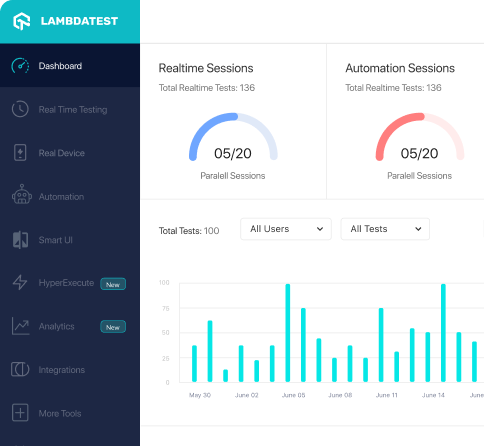How to use ValueMatcherCompareToHandler class of org.testingisdocumenting.webtau.expectation.equality.handlers package
Best Webtau code snippet using org.testingisdocumenting.webtau.expectation.equality.handlers.ValueMatcherCompareToHandler
...18import org.testingisdocumenting.webtau.expectation.ValueMatcher;19import org.testingisdocumenting.webtau.expectation.equality.CompareToComparator;20import org.testingisdocumenting.webtau.expectation.equality.CompareToComparator.AssertionMode;21import org.testingisdocumenting.webtau.expectation.equality.CompareToHandler;22public class ValueMatcherCompareToHandler implements CompareToHandler {23 @Override24 public boolean handleEquality(Object actual, Object expected) {25 return expected instanceof ValueMatcher;26 }27 @Override28 public void compareEqualOnly(CompareToComparator comparator, ActualPath actualPath, Object actual, Object expected) {29 ValueMatcher expectedMatcher = (ValueMatcher) expected;30 if (comparator.getAssertionMode() == AssertionMode.EQUAL) {31 handleMatcher(comparator, actualPath, actual, expectedMatcher);32 } else {33 handleNegativeMatcher(comparator, actualPath, actual, expectedMatcher);34 }35 }36 private void handleMatcher(CompareToComparator comparator, ActualPath actualPath, Object actual, ValueMatcher expectedMatcher) {...Blogs
Check out the latest blogs from LambdaTest on this topic:
In general, software testers have a challenging job. Software testing is frequently the final significant activity undertaken prior to actually delivering a product. Since the terms “software” and “late” are nearly synonymous, it is the testers that frequently catch the ire of the whole business as they try to test the software at the end. It is the testers who are under pressure to finish faster and deem the product “release candidate” before they have had enough opportunity to be comfortable. To make matters worse, if bugs are discovered in the product after it has been released, everyone looks to the testers and says, “Why didn’t you spot those bugs?” The testers did not cause the bugs, but they must bear some of the guilt for the bugs that were disclosed.
Unit and functional testing are the prime ways of verifying the JavaScript code quality. However, a host of tools are available that can also check code before or during its execution in order to test its quality and adherence to coding standards. With each tool having its unique features and advantages contributing to its testing capabilities, you can use the tool that best suits your need for performing JavaScript testing.
Web applications continue to evolve at an unbelievable pace, and the architecture surrounding web apps get more complicated all of the time. With the growth in complexity of the web application and the development process, web application testing also needs to keep pace with the ever-changing demands.
The key to successful test automation is to focus on tasks that maximize the return on investment (ROI), ensuring that you are automating the right tests and automating them in the right way. This is where test automation strategies come into play.
When working on web automation with Selenium, I encountered scenarios where I needed to refresh pages from time to time. When does this happen? One scenario is that I needed to refresh the page to check that the data I expected to see was still available even after refreshing. Another possibility is to clear form data without going through each input individually.
Automation Testing Tutorials
Learn to execute automation testing from scratch with LambdaTest Learning Hub. Right from setting up the prerequisites to run your first automation test, to following best practices and diving deeper into advanced test scenarios. LambdaTest Learning Hubs compile a list of step-by-step guides to help you be proficient with different test automation frameworks i.e. Selenium, Cypress, TestNG etc.
LambdaTest Learning Hubs:
- JUnit Tutorial
- TestNG Tutorial
- Webdriver Tutorial
- WebDriverIO Tutorial
- Protractor Tutorial
- Selenium 4 Tutorial
- Jenkins Tutorial
- NUnit Tutorial
- Jest Tutorial
- Playwright Tutorial
- Cypress Tutorial
- PyTest Tutorial
YouTube
You could also refer to video tutorials over LambdaTest YouTube channel to get step by step demonstration from industry experts.
Most used methods in ValueMatcherCompareToHandler
Try LambdaTest Now !!
Get 100 minutes of automation test minutes FREE!!



